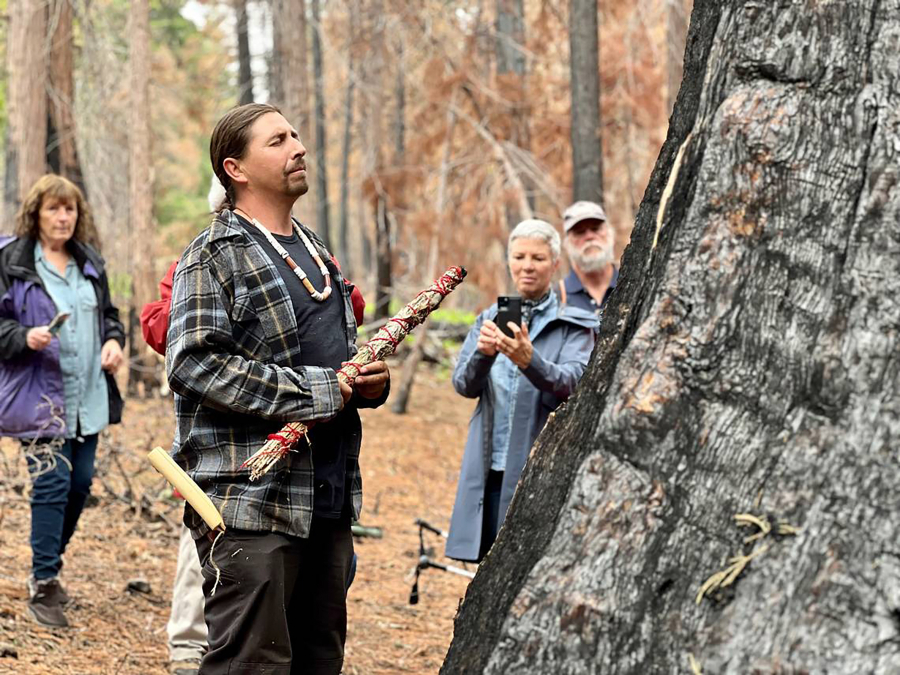A pair of giant sequoias were damaged in a prescribed burn last fall at Calaveras Big Trees State Park — and when they were discovered months later, it was unknown whether one of them would survive.
A year after the planned fire that scorched them, the California Department of Parks and Recreation announced Wednesday morning that The Orphans not only are alive but are surrounded by thousands of giant sequoia seedlings.
“Standing beneath these magnificent trees and seeing the carpet of baby seedlings is incredible,” said Danielle Gerhart, California State Parks Central Valley district superintendent, in a news release. “Sequoia regeneration is one key forest management goal in Calaveras Big Trees State Park, and witnessing the results of the burn program through this new growth shows the importance of fire in the ecosystem.”
Here’s what happened to the trees during the prescribed burn, and how scientists discovered they are still alive:
Prescribed burn at California State Park damaged ancient trees
In October 2022, California State Parks conducted a prescribed burn in the North Grove area of Calaveras Big Trees.
Prescribed burns are done to reduce wildfire risk and promote giant sequoia regeneration, the department said in a statement to The Modesto Bee in June.
When the Walter W. Smith Memorial Parkway reopened after its winter closure, the department said one of the two trees was found to have suffered significant scorch within the prescribed burn perimeter. John Buckley, executive director of the Central Sierra Environmental Resource Center, said at the time that the older of the two monarch sequoias had a “high risk of dying.”
Buckley previously told The Bee that The Orphans are estimated to be at least 500 years old, with one possibly twice that age.
Kristen Shive, a fire ecologist and assistant professor at UC Berkeley, did not see The Orphans in person at the time of the finding but saw photos of them and said it looked like the crown damage was the result of heat from fire on the forest floor and from flames that consumed a neighboring non-sequoia.
The Orphans show signs of life
Shive was among scientists who visited The Orphans nearly a month ago and observed they are living, the release said.
“Sometimes there are minimal losses of ancient trees even in a restorative prescribed fire,” Shive said in the release. “Giant sequoias are not museum pieces, and some mortality is part of this living, dynamic ecosystem. But the potential for minimal losses in prescribed fire is far preferable to the thousands of ancient trees that were killed in 2020 and 2021 when fuel-loaded forests burned in severe wildfires.”
This, of course, was not the fate for the Orphans, which were named by early California immigrants. Green foliage growth in the crown of one of the trees proves it did not die in the prescribed burn.
“Our study in recent wildfires found that trees with a large fire scar at their base can take roughly 85-90% crown loss and still survive,” Shive told The Bee in June.
The scientists also noted sequoia seedlings surrounding the trees in the North Grove. Out of these seedlings battling to survive, only a few will become the next generation of giants, according to the release.
“The Orphans and the new seedlings demonstrate giant sequoia resilience, fire dependence and adaptation,” the parks department said in the release. “To protect the future of these seedlings and the North Grove, the public can help by remaining on the trail to avoid trampling the new growth.”



